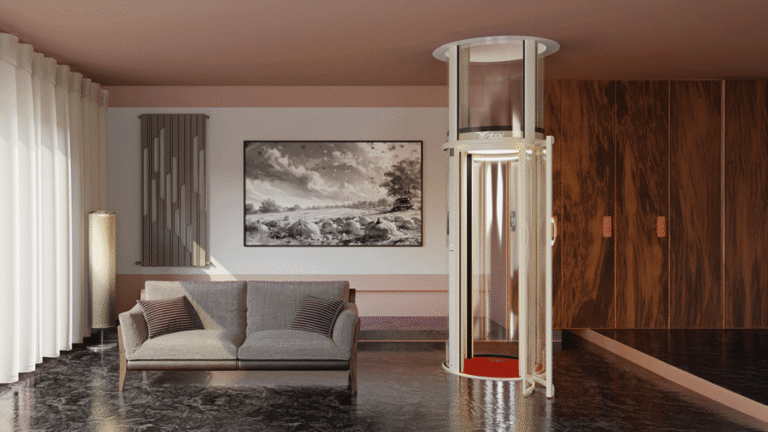In recent years, home elevators have evolved from being symbols of luxury to essential elements of modern living. As Australian homeowners focus more on comfort, accessibility, and long-term value, home elevators are fast becoming a popular feature in multi-level residences. Brands like Nibav Lifts have redefined home mobility with stylish, space-saving, and eco-friendly elevator systems that blend seamlessly into any home design.
Why Home Elevators Are Becoming a Must-Have in Modern Homes
The growing demand for Home Elevators in Australia reflects a shift toward smarter, future-ready living. They offer convenience for families, accessibility for elderly residents, and an elegant touch that enhances home interiors. With urban homes being built vertically due to limited space, elevators are no longer just luxury add-ons, they are practical investments that improve quality of life.
From personal experience, installing a compact home elevator in my Sydney home transformed our daily routine. My elderly parents found it much easier to move between floors, and the entire installation was surprisingly quick and mess-free. The result was not just increased accessibility but also an unexpected boost in property value and aesthetic appeal.
Understanding How Home Elevators Work
Modern home elevators operate using advanced technologies designed for safety, energy efficiency, and minimal maintenance. The most innovative models, like those from Nibav Lifts, rely on air-driven or vacuum technology, which uses atmospheric pressure to move the elevator cab between floors. This eliminates the need for oil, cables, or counterweights making the system quieter, cleaner, and more sustainable.
Traditional hydraulic and traction elevators are still available, but they often require pits, shafts, or machine rooms. Pneumatic lifts, on the other hand, can be installed within days and require minimal structural modification, making them ideal for both new and existing homes.
Benefits of Installing Home Elevators
Installing a home elevator comes with numerous benefits beyond accessibility.
Enhanced Mobility: Families with elderly members or individuals with limited mobility can move safely and independently between floors.
Increased Property Value: Real estate data shows that homes equipped with modern elevators can increase in resale value by up to 15%, making them a smart financial investment.
Space Efficiency: Compact elevator models require very little floor space and can fit into almost any layout.
Eco-Friendly Operation: Air-powered lifts like Nibav’s use minimal electricity — equivalent to running a standard household appliance — and consume power only during ascent.
Design Appeal: Modern elevators are available in sleek finishes, glass cabins, and customizable colors, adding a luxurious yet functional element to any home.
Choosing the Right Home Elevator for Your Needs
When considering home elevators in Australia, it’s essential to choose a system that aligns with your home’s layout, design, and budget.
If you live in a compact townhouse, a two-stop pneumatic lift is ideal. For larger properties or multi-story villas, four-stop models with higher load capacity may be a better fit. Consider aspects like:
- Installation Time: Some elevators can be installed in just 2–4 days.
- Power Usage: Opt for energy-efficient models to save on long-term costs.
- Maintenance Requirements: Pneumatic lifts typically require minimal upkeep.
- Safety Features: Look for automatic braking systems, backup power, and door interlocks that comply with Australian safety standards.
Brands such as Nibav Lifts are renowned for combining these features into one user-friendly, sustainable package, offering long-term value for homeowners.
Home Elevators Cost and Affordability
The cost of home elevators in Australia varies based on technology, size, and customization. On average, prices range between AUD 30,000 and AUD 70,000. Pneumatic lifts are typically more affordable due to their minimal construction requirements.
While the upfront cost may seem significant, the long-term benefits including low energy consumption, minimal maintenance, and improved property value make home elevators a worthwhile investment. Moreover, government incentives and accessibility grants may be available in certain regions to support installations for individuals with mobility needs.
Sustainability and Innovation in Home Elevator Design
With growing awareness of environmental responsibility, sustainability has become a key focus in modern home design. The new generation of home elevators is designed with eco-conscious materials and energy-saving mechanisms.
Nibav Lifts leads this shift by offering elevators that are 100% air-driven, using recyclable components like aircraft-grade aluminum and polycarbonate glass. Their systems consume no oil or lubrication and can be powered by regular single-phase electricity, reflecting how innovation and sustainability can coexist in home design.
Final Thoughts
The adoption of home elevators in Australia marks a new era of functional luxury. They represent more than just convenience; they symbolize a future-ready home designed for comfort, accessibility, and sustainability.
From personal experience, investing in a home elevator not only enhanced my family’s quality of life but also reshaped the way we used our living space. With reliable brands like Nibav Lifts, homeowners can enjoy world-class engineering, elegant designs, and lasting performance all while contributing to a greener future.
If you’re considering a home upgrade that combines practicality with sophistication, installing a modern elevator is one of the most rewarding decisions you can make.
FAQs
How much do home elevators cost in Australia?
The average cost ranges from AUD 30,000 to AUD 70,000, depending on the model, number of stops, and customization options.
Are home elevators safe for daily use?
Yes. Modern elevators from trusted brands like Nibav Lifts adhere to Australian safety standards and include features like emergency lowering systems, air pressure braking, and power backup.
Can home elevators be installed in existing homes?
Absolutely. Pneumatic home elevators can be installed without major structural changes, making them ideal for existing buildings.
How much electricity does a home elevator use?
Air-driven home elevators are highly energy-efficient and consume power only when moving upward, comparable to a standard household appliance.
Do home elevators increase property value?
Yes. Installing a high-quality elevator enhances accessibility and appeal, significantly boosting your home’s market value.


